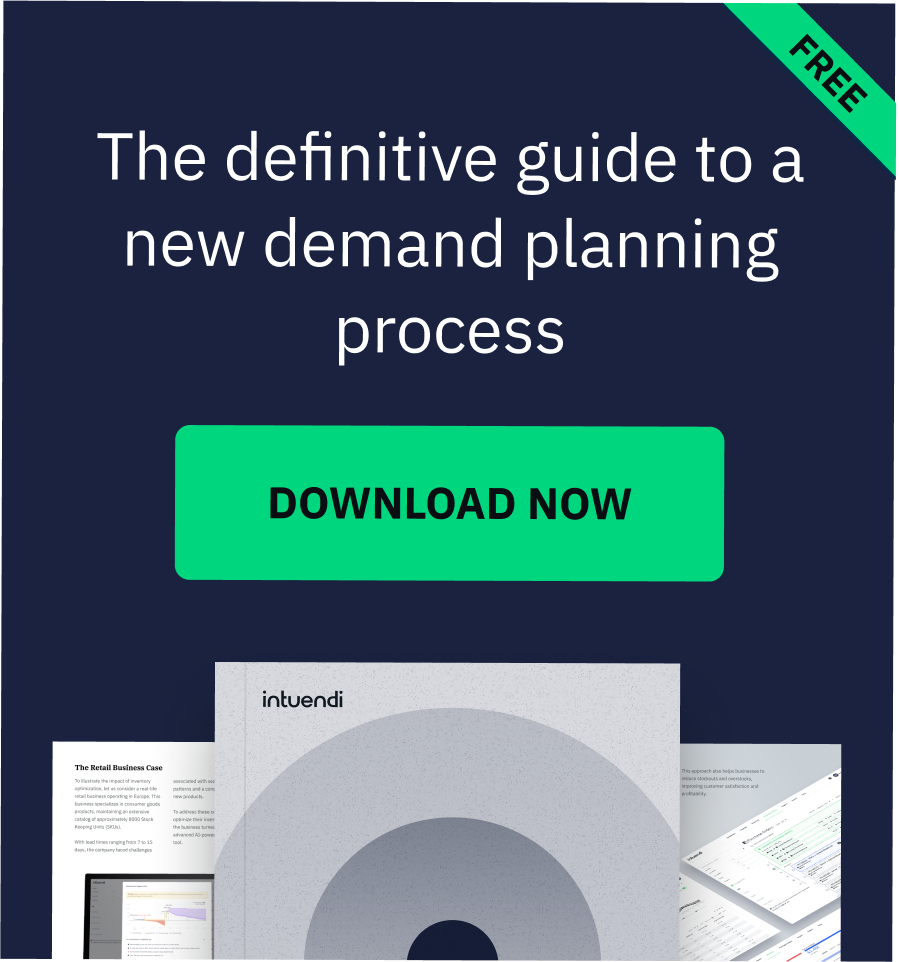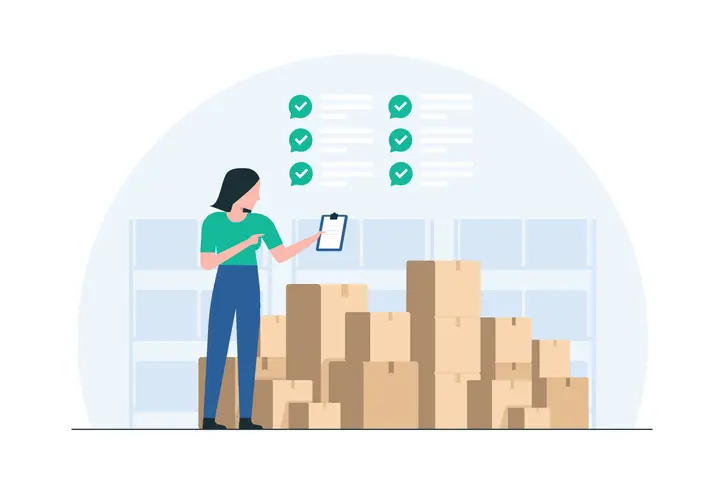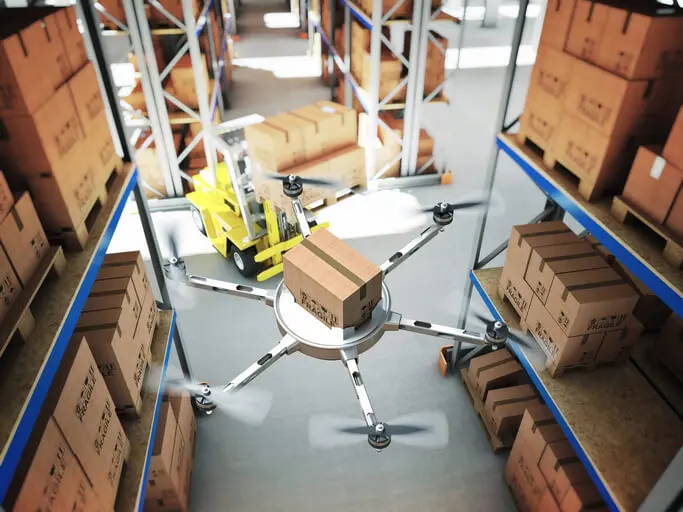Stockouts have been one of the most persistent and costly challenges in supply chain management since the rise of modern retail. With all the advancements in technology, systems, and planning, you’d think we’d have solved this by now. Yet even in 2025, despite thoughtful forecasting, vendor coordination, and procurement planning, many businesses still find themselves unable to meet customer demand consistently.
Even just a single stockout can cause immediate financial loss, disrupt operations, and damage customer trust. Over time, frequent stockouts can create serious competitive disadvantages, even for well-established companies.
The consequences of stockouts are undeniable, prompting many supply chain leaders to ask, “Isn’t there a better way by now?” The answer is yes. Demand planning solutions today don’t just help prevent stockouts, they make accurate, responsive inventory management repeatable and scalable.
The Hidden Cost of Stockouts
At first glance, a stockout might seem like a short-term hiccup. A temporary problem. A customer can’t purchase a product, the team scrambles to replenish, and eventually things go back to normal…right? We wish! In reality, the true impact of stockouts goes far deeper than that.
Lost Revenue
Every missed sale chips away at top-line performance. Multiply that across dozens of retail locations or ecommerce channels, and the losses add up quickly. For high-demand products or peak-season periods, a single stockout can result in thousands (or even millions) of dollars in lost revenue.
Customer Churn
Today’s consumers have more choices than ever before, we all know this. If your product isn’t available, most customers won’t wait—they’ll just go elsewhere. Worse than that, many don’t return after a poor experience. One out-of-stock moment can turn into permanent churn, especially in industries with high competition and low switching costs.
Reputation Damage
Reliability matters. Repeated stockouts send a message to customers, partners, and even investors that operations aren’t optimized. This can damage brand credibility and create a perception of unreliability, even if the rest of your customer experience is exceptional.
Operational Inefficiencies
Stockouts often trigger emergency workarounds: expedited shipping, last-minute vendor orders, and manual inventory checks. These reactive measures drain internal resources, increase logistics costs, and shift focus away from strategic priorities.
Forecasting Instability
When stockouts occur, they don’t just impact today’s sales, they distort future projections. If customers can’t buy what they want, sales data is incomplete. That leads to skewed forecasts and poor purchasing decisions in the next cycle, perpetuating the stockout problem.
According to recent studies, businesses lose an estimated 4% to 8% of total annual revenue due to stockouts.
Why Stockouts Happen
Understanding the root causes of stockouts is essential to building a strategy for preventing them. While no supply chain is immune to disruption, the following issues often underlie recurring shortages:
1. Inaccurate Demand Forecasting
Traditional forecasting methods can’t keep up with today’s complex buying behaviors. They often fail to capture sudden spikes in demand or shifts in customer preferences. In fast-moving or seasonal markets, even small errors in forecast accuracy can result in significant understocking.
2. Supplier Delays
Long lead times, unpredictable vendors, and global supply chain shocks (e.g., port strikes, geopolitical instability, or raw material shortages) can derail even the most carefully constructed procurement plans. Without built-in flexibility and predictive tools, businesses are left reacting to problems after the fact.
3. Reactive Procurement
When inventory teams rely on manual processes or wait for alerts from outdated systems, restocking becomes reactive rather than proactive. This lag often results in missed reorder points, especially during demand spikes or vendor delays.
4. Seasonality and Promotions
Promotional events, flash sales, or peak seasonal periods can lead to misalignments between supply and demand. When demand planning doesn’t fully account for these fluctuations, or lacks historical context across similar events, businesses can overinvest in the wrong SKUs and understock the ones customers are actually seeking.
5. Limited Scenario Planning
Many teams lack the tools to model different supply and demand scenarios. Without that ability, it’s hard to prepare for what-if situations (supplier disruptions, promotional uplifts, or economic changes). This blind spot makes the supply chain fragile and increases the risk of stockouts when market conditions shift unexpectedly.
How AI Is Transforming Stockout Prevention
Modern supply chains need more than guesswork. They need dynamic, intelligent systems capable of adapting in real time. That’s where solutions like Intuendi come in.
Intuendi’s AI-powered demand planning platform is purpose-built to help businesses prevent stockouts with more precision and less manual effort.
Here’s how it works:
AI-Powered Forecasting
Intuendi’s demand forecasting leverages advanced AI and machine learning to deliver highly accurate, SKU-level predictions tailored to each sales channel. By combining time series analysis with external variables like promotions, holidays, and marketing spend, the platform generates realistic demand scenarios that adapt quickly to changes.
Inventory Optimization
Intuendi’s inventory optimization solution automates and orchestrates every aspect of stock management to ensure businesses maintain ideal inventory levels. Using real-time stockout risk analysis, probabilistic forecasting, and smart classification, the platform adjusts replenishment strategies based on item behavior, service levels, and constraints like MOQ and shipping intervals. Whether managing a single warehouse or a multi-echelon network, Intuendi intelligently reallocates inventory across locations and simulates future demand to support both short- and long-term planning.
Order Management
Intuendi’s order management software streamlines and automates the entire purchasing process, helping businesses save time while ensuring replenishments are timely, accurate, and cost-effective. The platform generates intelligent order suggestions based on real-time demand, supplier constraints, and purchasing routines, whether daily, weekly, or monthly. It handles purchase, production, and transfer orders across your supply chain, factoring in minimum order quantities, budget limits, packing units, and more.
Preventing Stockouts Is a Competitive Edge
In an increasingly unpredictable market, the ability to maintain product availability, regardless of supply chain challenges, is a strategic asset. Customers expect reliability, and the businesses that can deliver it consistently will win in the long run.
Stockouts may have been a longstanding challenge in supply chain management for decades, but they no longer have to be. With modern tools like AI-powered demand planning, businesses can finally move beyond reactive operations and into a new era of proactive, data-driven inventory management. The technology is here. The systems are smarter.
Intuendi’s AI platform gives teams the clarity and tools they need to:
- Improve revenue by avoiding missed sales
- Increase customer satisfaction and loyalty
- Reduce excess inventory and operational costs
- Strengthen forecasting and procurement accuracy
- Gain resilience against disruptions and uncertainty
Use the tools available to you to turn preventing stockouts from a constant firefight into a streamlined, proactive process.






